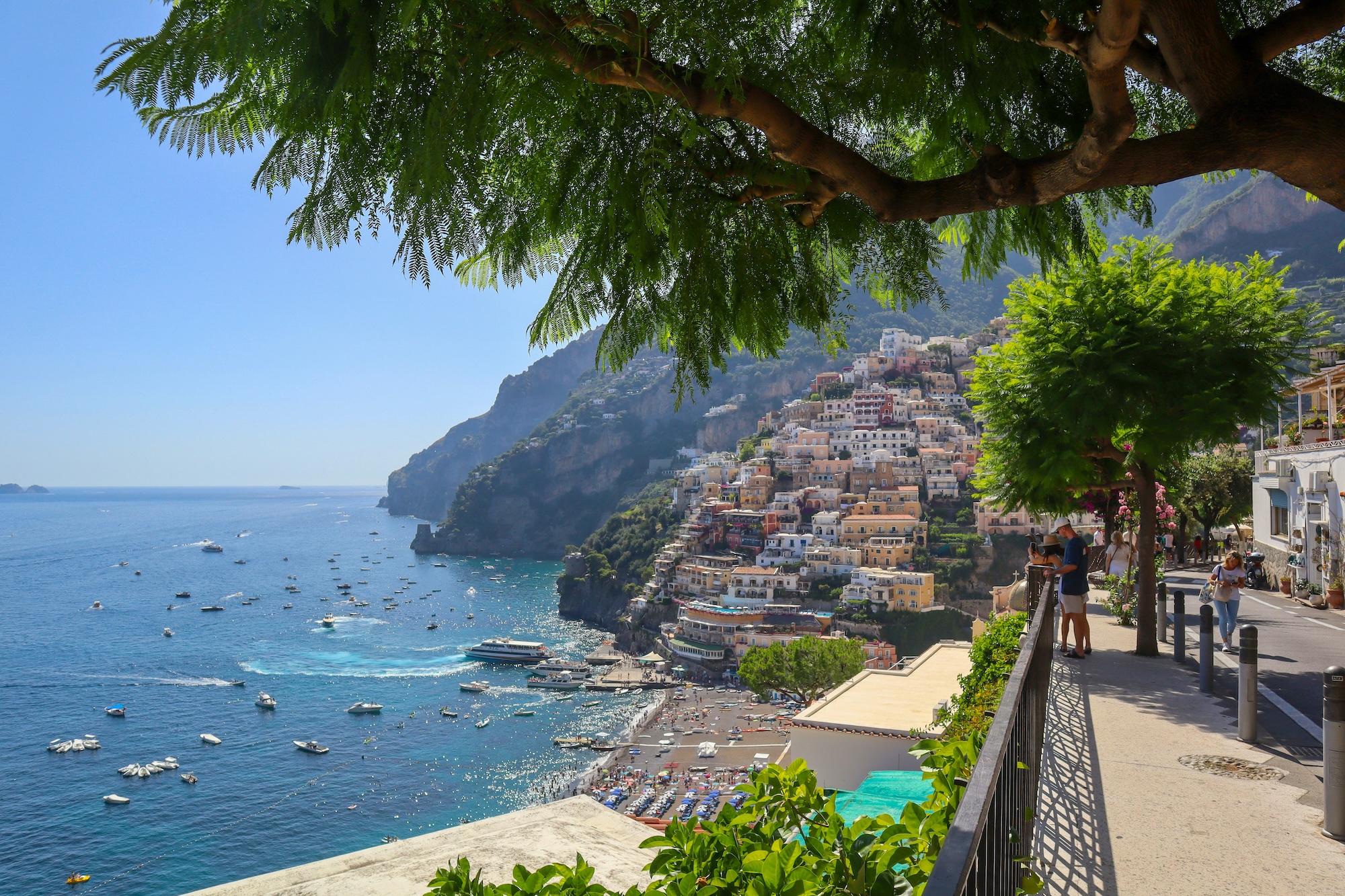
World Travel Tips
What Should You Do in The Amalfi Coast?
The Amalfi Coast is a dazzling stretch of southern Italy’s coastline famed for its dramatic cliffs, pastel-colored villages, and sparkling blue Mediterranean waters. This UNESCO World Heritage Site has enchanted travelers for centuries with its sun-drenched landscapes, charming historic towns, and a lifestyle that perfectly blends relaxation with adventure.
Whether you’re seeking glamorous beaches, gourmet cuisine, hidden coves, or centuries-old culture, the Amalfi Coast is a dream destination that leaves a lasting impression on every visitor. Here are the must-visit towns, each with their own unique flavor and unforgettable sights.
1. Positano
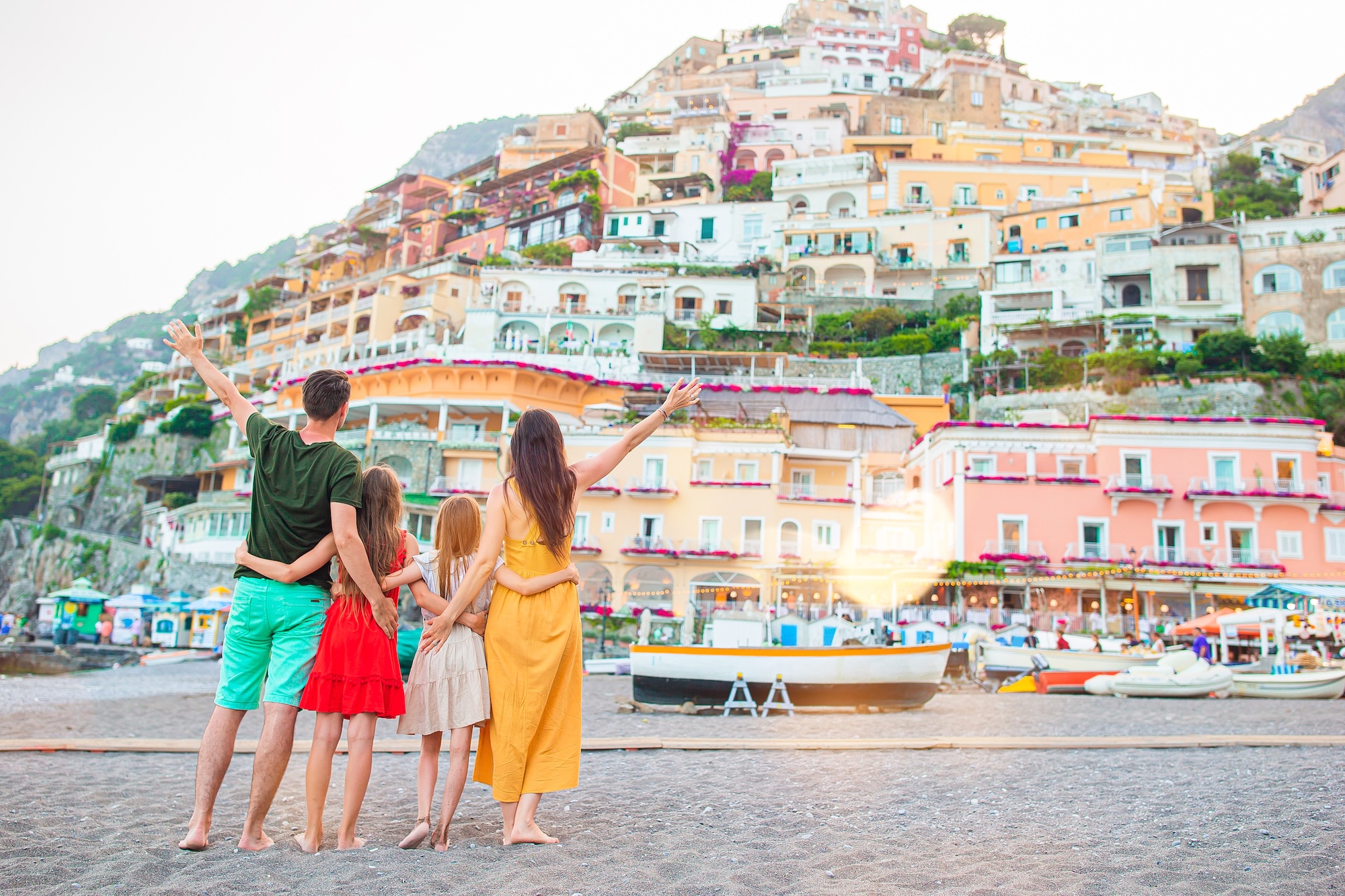
The vertical city of Positano is the most iconic and photographed town on the Amalfi Coast, instantly recognizable for its cascade of colorful houses tumbling down steep cliffs toward the sea. Famous for its chic boutiques, romantic hotels, and picturesque pebble beaches, Positano is a favorite with celebrities and jet-setters as well as first-time visitors.
Top Attractions:
- Spiaggia Grande – The town’s main beach, framed by dramatic cliffs and lively with cafes, is perfect for soaking up the sun and local vibe.
- Church of Santa Maria Assunta – Instantly identifiable by its beautiful majolica-tiled dome, this church is home to a legendary Byzantine icon of the Madonna.
- Path of the Gods (Il Sentiero degli Dei) – One of Italy’s most breathtaking hikes, offering sweeping views of the coast from high above the town.
Why visit?
Positano is a postcard come to life. Its enchanting streets, world-class shopping, and cliffside dining make it a romantic and stylish base for exploring the Amalfi Coast.
2. Amalfi
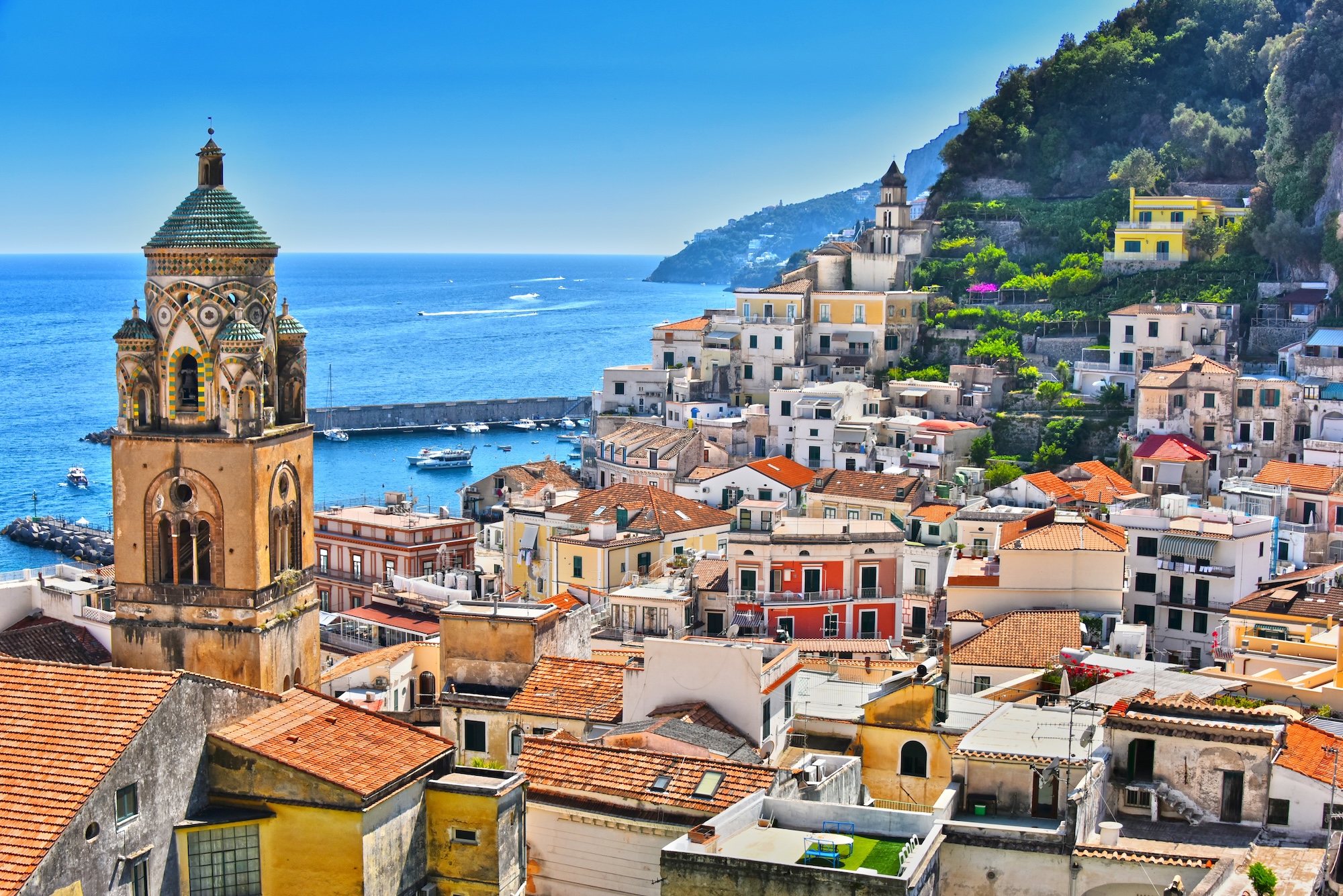
Once a powerful maritime republic, Amalfi is the namesake of the coast and brims with medieval history, vibrant piazzas, and scenic seafront views. The town is famous for its grand cathedral and historic paper mills, set against a dramatic mountain backdrop.
Top Attractions:
- Amalfi Cathedral (Duomo di Sant’Andrea) – A magnificent 9th-century cathedral, known for its striking Arab-Norman facade and impressive staircase.
- Valle delle Ferriere – A lush natural reserve filled with waterfalls, rare plants, and scenic hiking trails.
- Museum of Paper (Museo della Carta) – Showcasing Amalfi’s medieval papermaking tradition, with interactive exhibits in ancient mills.
Why visit?
Amalfi blends history, natural beauty, and lively seaside culture. It’s perfect for travelers seeking a mix of architecture, adventure, and culinary delights.
3. Ravello
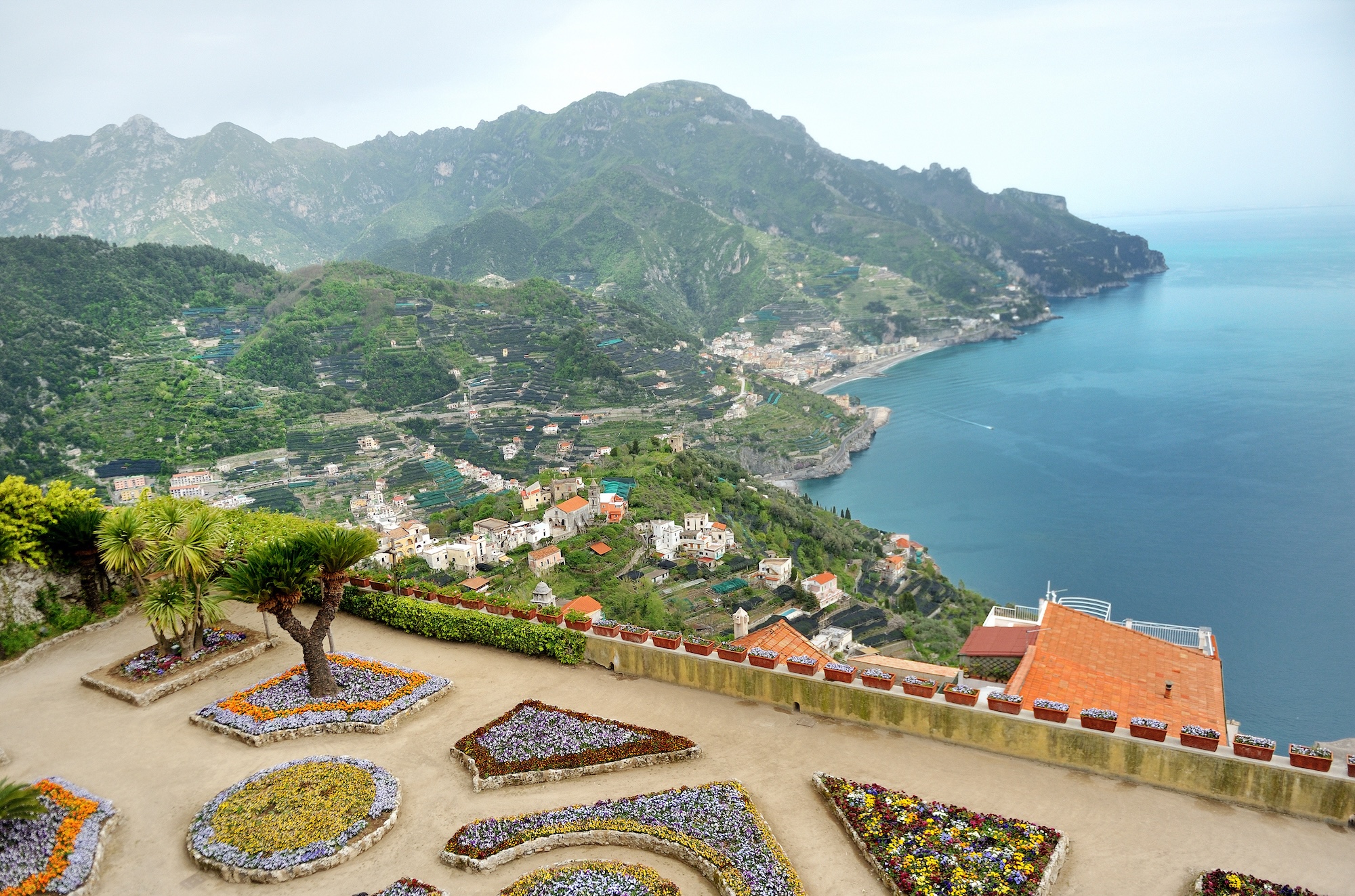
Perched high above the coast, Ravello is famed for its romantic gardens, elegant villas, and panoramic terraces. This town has inspired artists, writers, and composers for centuries, offering a quieter and more refined atmosphere than the bustling coastal towns.
Top Attractions:
- Villa Cimbrone – Renowned for its spectacular gardens and the unforgettable Terrace of Infinity overlooking the sea.
- Villa Rufolo – Historic villa with lush gardens, stunning views, and an open-air stage for Ravello’s famed music festival.
- Ravello Cathedral (Duomo di Ravello) – A beautiful church with ancient bronze doors and remarkable mosaics.
Why visit?
Ravello is a peaceful hilltop escape. Its breathtaking views, artistic heritage, and lush gardens make it an unmissable destination for dreamers and romantics.
4. Sorrento
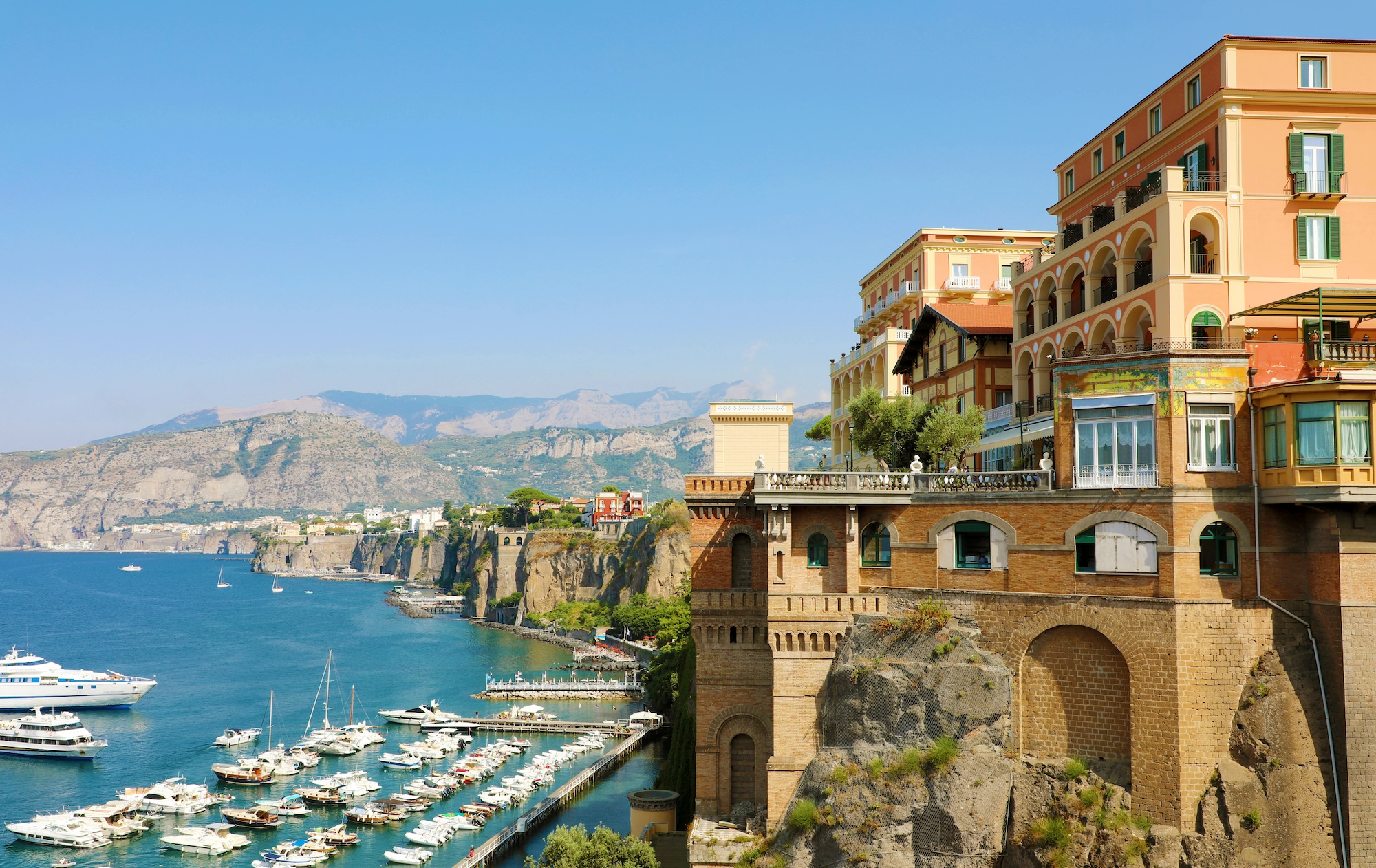
While technically just outside the Amalfi Coast, Sorrento is a major gateway to the region and a perennial favorite with visitors. Overlooking the Bay of Naples, Sorrento offers a vibrant mix of sun-drenched piazzas, lemon groves, and lively marinas.
Top Attractions:
- Piazza Tasso – The bustling heart of Sorrento, lined with cafes and historic buildings.
- Marina Grande – A charming fishing village and beach area known for its seafood restaurants and colorful boats.
- Cloister of San Francesco – A peaceful medieval cloister surrounded by gardens, perfect for a tranquil stroll.
Why visit?
Sorrento offers easy access to both the Amalfi Coast and the island of Capri. Its relaxed vibe, stunning sunsets, and delicious limoncello make it a favorite stop for all kinds of travelers.
5. Praiano
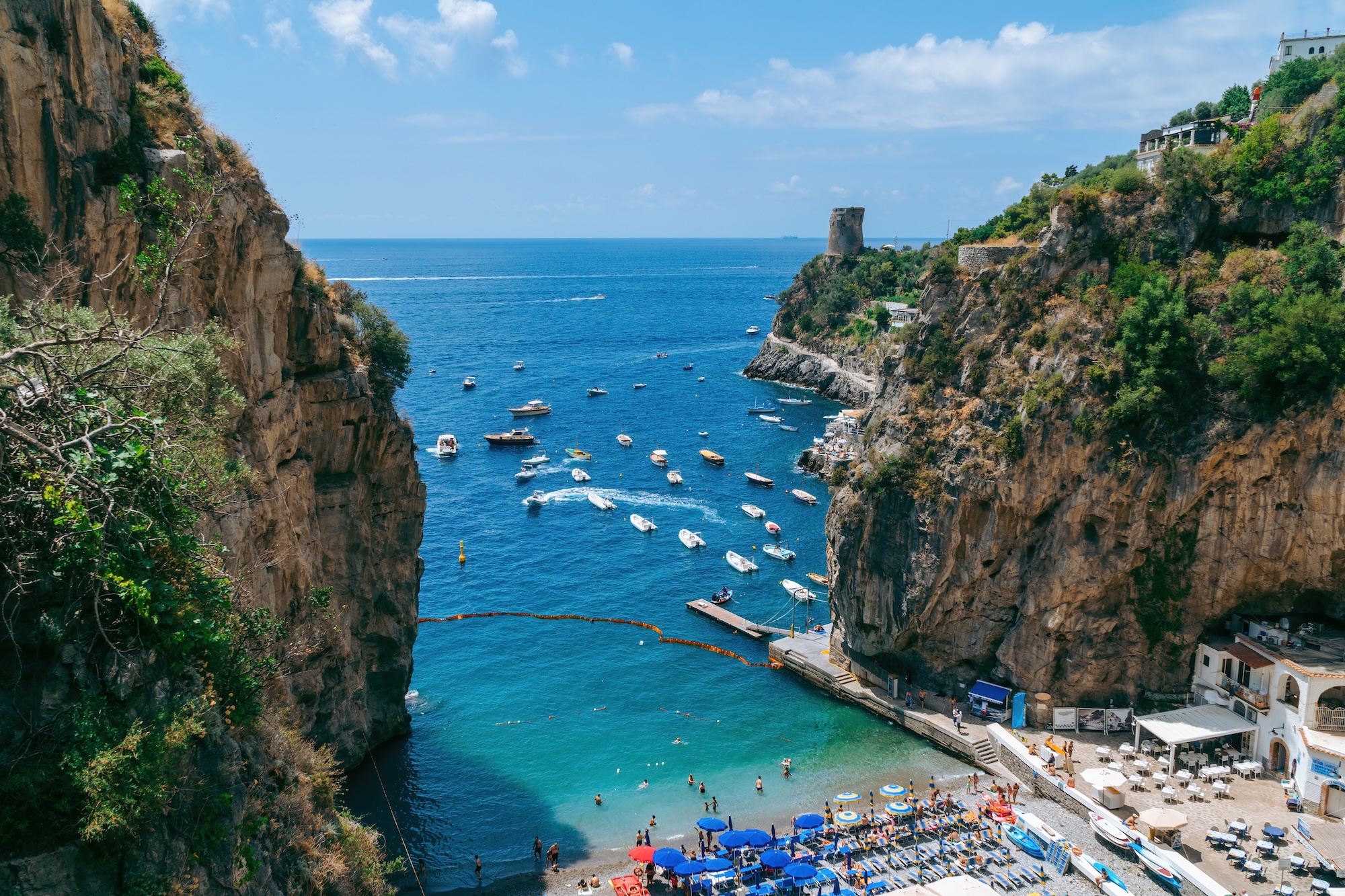
Nestled between Positano and Amalfi, Praiano is a tranquil village known for its authentic charm, panoramic sunsets, and peaceful pebble beaches. It’s less crowded than its famous neighbors, offering a more laid-back experience.
Top Attractions:
- Marina di Praia – A picturesque beach set between cliffs, perfect for swimming and boat trips.
- Church of San Gennaro – Featuring a beautiful tiled dome and stunning views over the sea.
- Path of the Gods Trailhead – An excellent starting point for the legendary coastal hike.
Why visit?
Praiano is ideal for travelers seeking serenity and local flavor, with gorgeous scenery and easy access to the region’s top hiking trails.
6. Minori
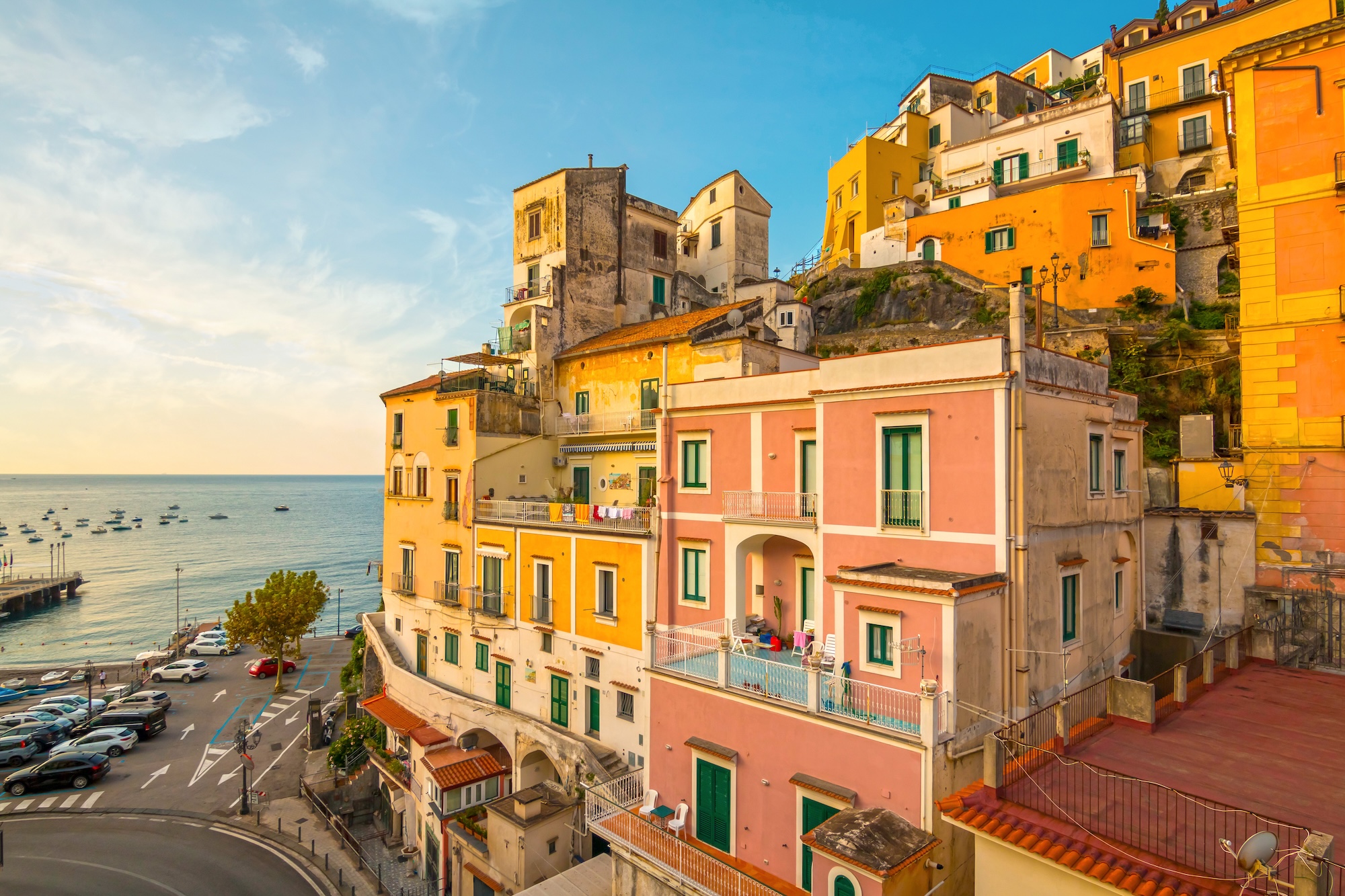
Charming Minori is known as the “City of Taste,” famous for its fresh pasta, pastries, and lemon desserts. The town features a lovely seaside promenade and impressive Roman ruins.
Top Attractions:
- Roman Villa Marittima – Ancient Roman villa ruins with beautiful mosaics and frescoes.
- Basilica di Santa Trofimena – A peaceful church in the heart of town with impressive relics.
- Minori Beach – A laid-back spot to relax, swim, or enjoy gelato by the sea.
Why visit?
Minori is perfect for foodies and history buffs, offering a welcoming atmosphere, delicious cuisine, and fascinating archeological sites.
7. Maiori
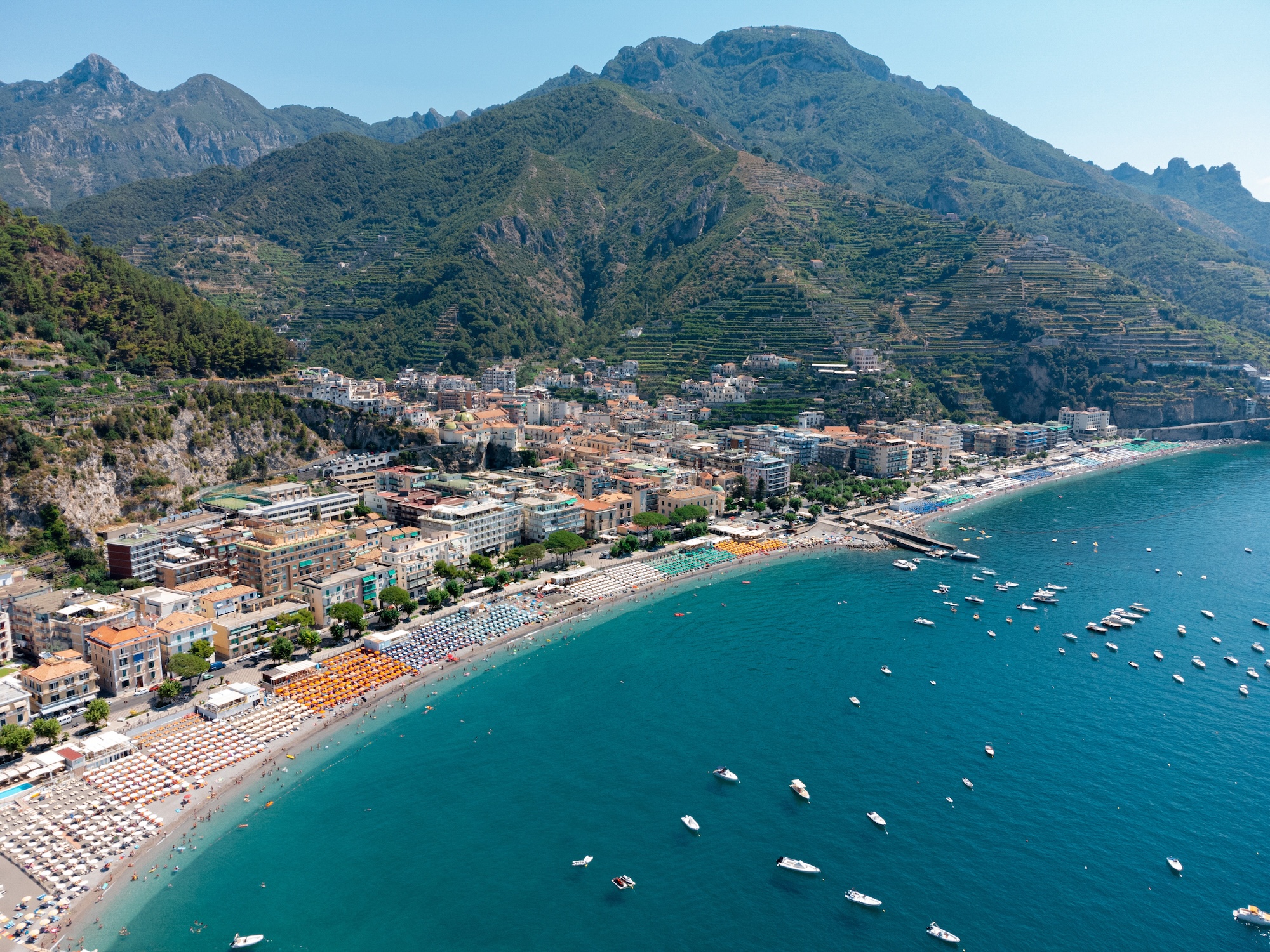
Neighboring Maiori boasts the longest unbroken stretch of sandy beach on the Amalfi Coast, making it a favorite with families. The town features a wide promenade, lively bars, and some unique film history.
Top Attractions:
- Maiori Beach – The longest beach on the coast, ideal for sunbathing and water sports.
- Castle of San Nicola de Thoro-Plano – An imposing hilltop fortress with panoramic views.
- Santa Maria de Olearia Abbey – Ancient monastery carved into the cliffs, featuring medieval frescoes.
Why visit?
Maiori is great for a relaxed beach vacation, with a family-friendly vibe and easy access to coastal adventures.
8. Cetara
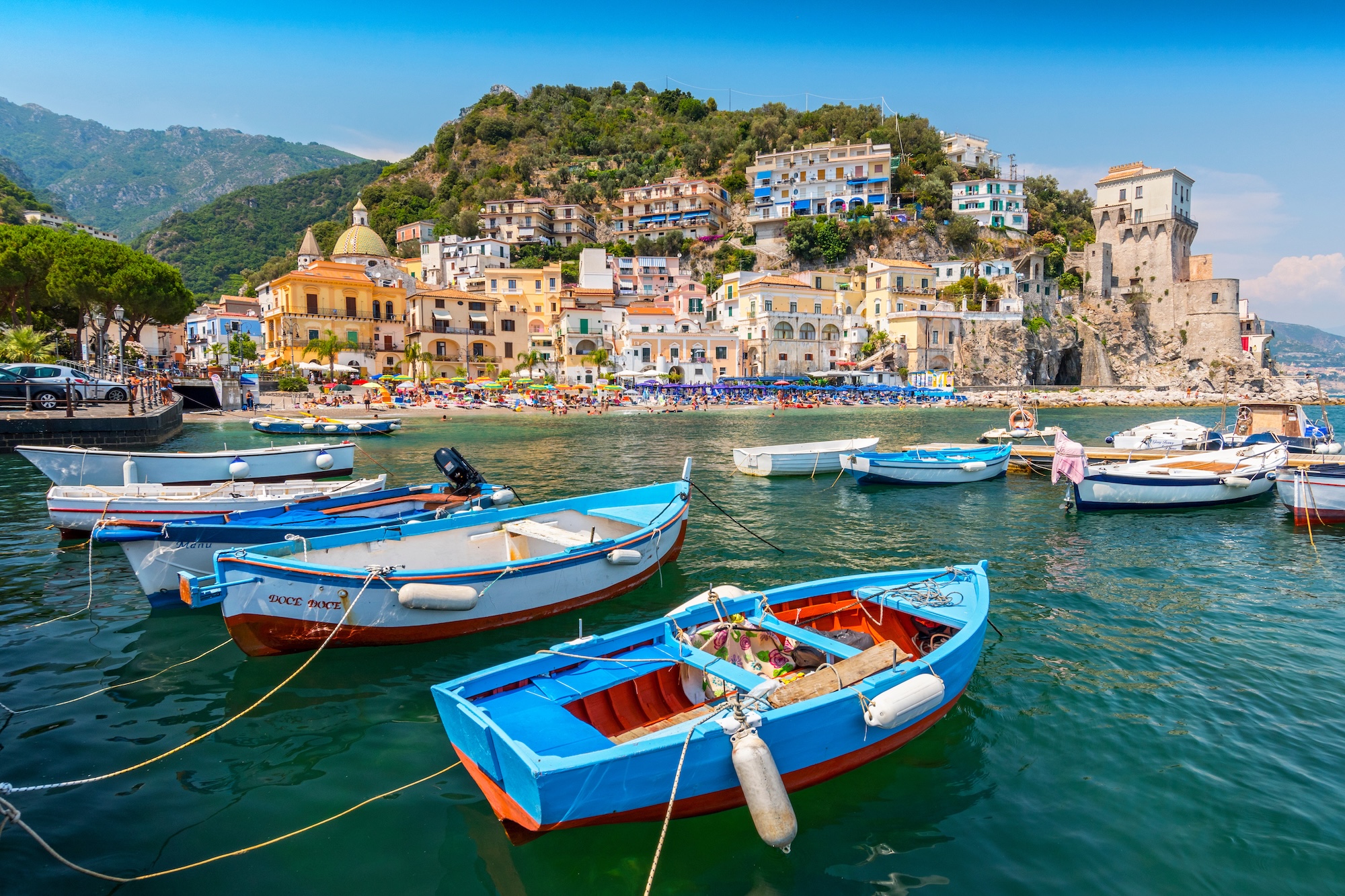
Authentic and unspoiled, Cetara is a traditional fishing village famous for its anchovy production and quiet, local atmosphere. It’s a great place to experience the slower pace of Amalfi Coast life.
Top Attractions:
- Cetara Beach – A small, sheltered beach popular with locals.
- Church of St. Peter the Apostle – The village’s spiritual heart, with a beautiful dome and historic artworks.
- Torre di Cetara – A medieval watchtower overlooking the sea.
Why visit?
Cetara offers an authentic taste of the Amalfi Coast’s fishing traditions, along with excellent seafood and uncrowded beaches.
9. Atrani
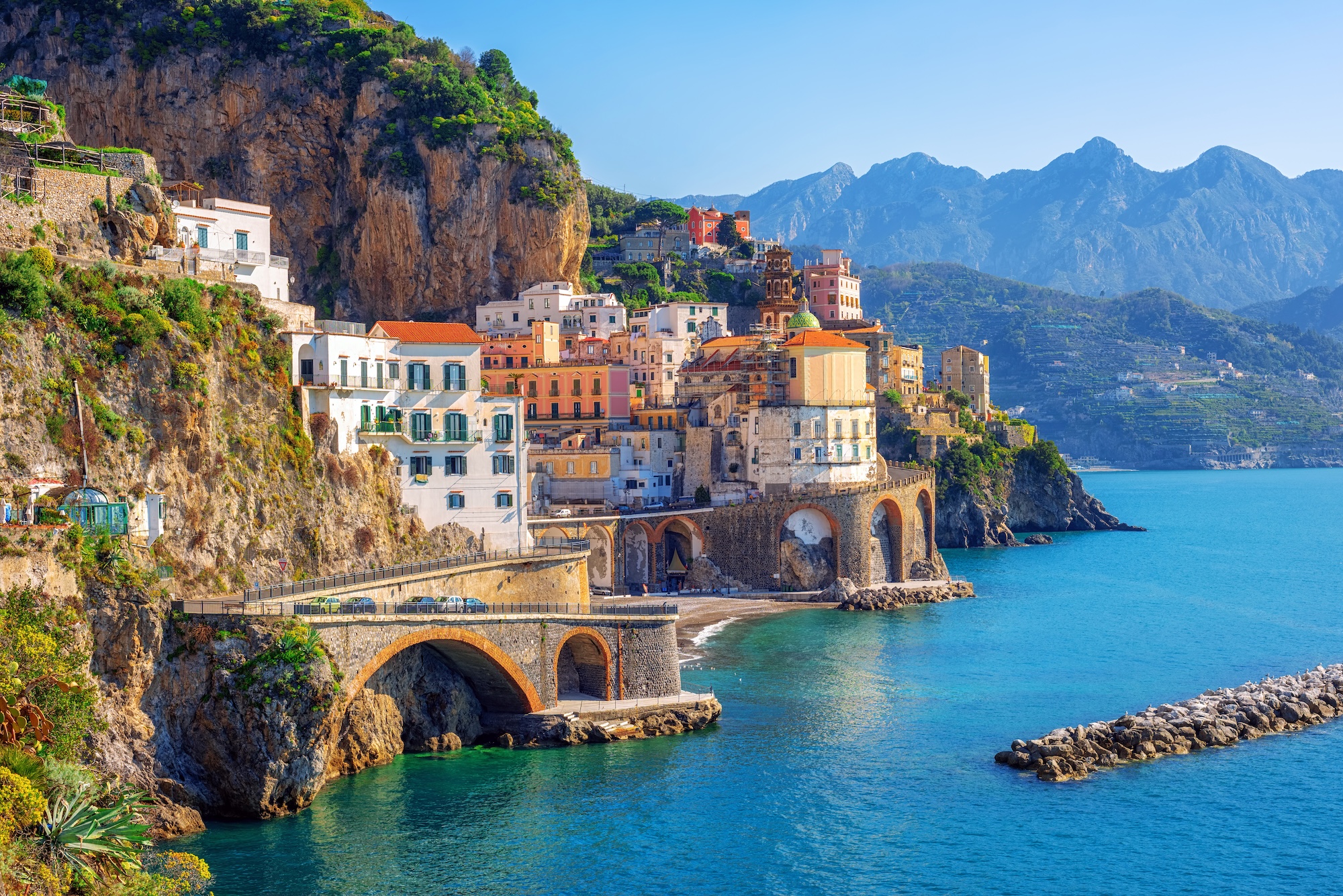
Tiny Atrani is one of Italy’s smallest and most picturesque towns, tucked away in a narrow gorge. Its maze-like streets, medieval charm, and peaceful beach make it a hidden gem just a short walk from Amalfi.
Top Attractions:
- Atrani Beach – A tranquil stretch of sand right at the base of the town.
- Church of San Salvatore de’ Birecto – An ancient church with historical significance.
- Piazzetta Umberto I – The heart of the village, surrounded by arches and lively cafes.
Why visit?
Atrani is the perfect spot for those seeking authenticity and tranquility, with easy access to the bigger attractions in Amalfi.
10. Vietri sul Mare
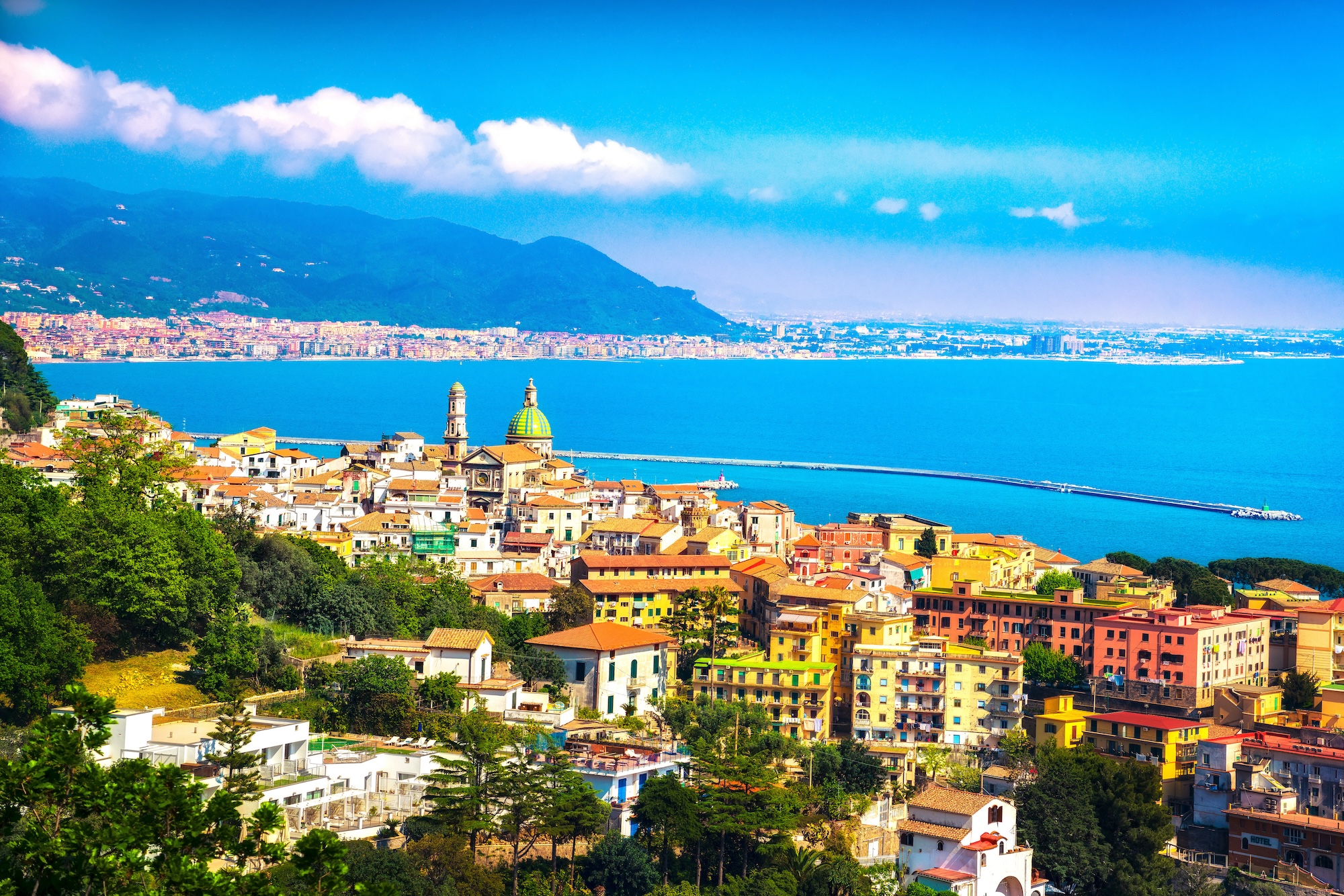
Famous as the gateway to the Amalfi Coast, Vietri sul Mare is renowned for its vibrant ceramics tradition, which colors the town’s buildings, shops, and squares. Its scenic location, welcoming beaches, and artisanal atmosphere make it an underrated gem.
Top Attractions:
- Church of San Giovanni Battista – Known for its striking majolica-tiled dome, this church is a symbol of the town’s ceramic artistry.
- Museo della Ceramica (Ceramics Museum) – Showcases Vietri’s centuries-old ceramics tradition with colorful collections and workshops.
- Vietri sul Mare Beach – A long sandy beach at the foot of the town, perfect for swimming and sunbathing.
Why visit?
Vietri sul Mare offers a unique blend of artisan culture and seaside relaxation, making it the perfect starting or ending point for exploring the Amalfi Coast.
11. Furore
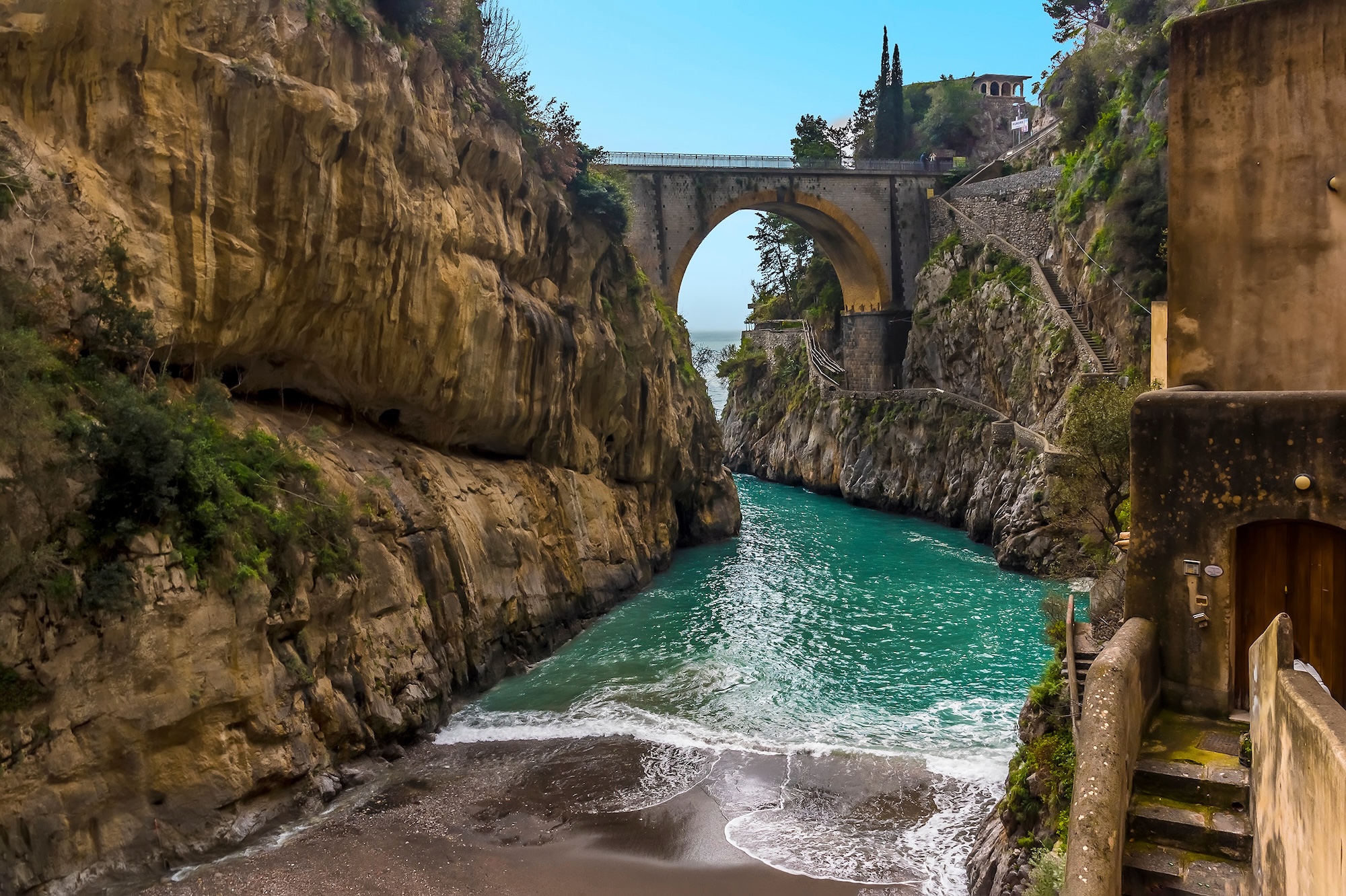
A dramatic and lesser-known destination, Furore is famed for its spectacular fjord, or “Fiordo di Furore,” a hidden inlet with turquoise waters and towering cliffs. The village is scattered along the cliffs above, offering a quiet, wild beauty.
Top Attractions:
- Fiordo di Furore – A stunning fjord with a tiny beach and arched bridge, popular with photographers and cliff divers.
- Marina di Furore – The seaside area below the cliffs, with crystal-clear water for swimming and snorkeling.
- Murals of Furore – A unique open-air art gallery, where local and international artists have decorated the village walls.
Why visit?
Furore is a paradise for adventurers and photographers, offering breathtaking landscapes, quiet hiking trails, and a truly unique coastal experience.
12. Conca dei Marini

Tucked between Amalfi and Praiano, Conca dei Marini is a peaceful village clinging to the cliffs. It’s best known for the magical Grotta dello Smeraldo and for being the birthplace of the beloved sfogliatella pastry.
Top Attractions:
- Grotta dello Smeraldo (Emerald Grotto) – A sea cave famous for its glowing green waters, accessible by boat or elevator.
- Chiesa di San Pancrazio – A hilltop church with spectacular sea views and serene surroundings.
- Capo di Conca Tower – An ancient watchtower offering panoramic vistas of the coast.
Why visit?
Conca dei Marini is ideal for travelers seeking tranquility, spectacular sea views, and a taste of authentic local life away from the crowds.
13. Scala
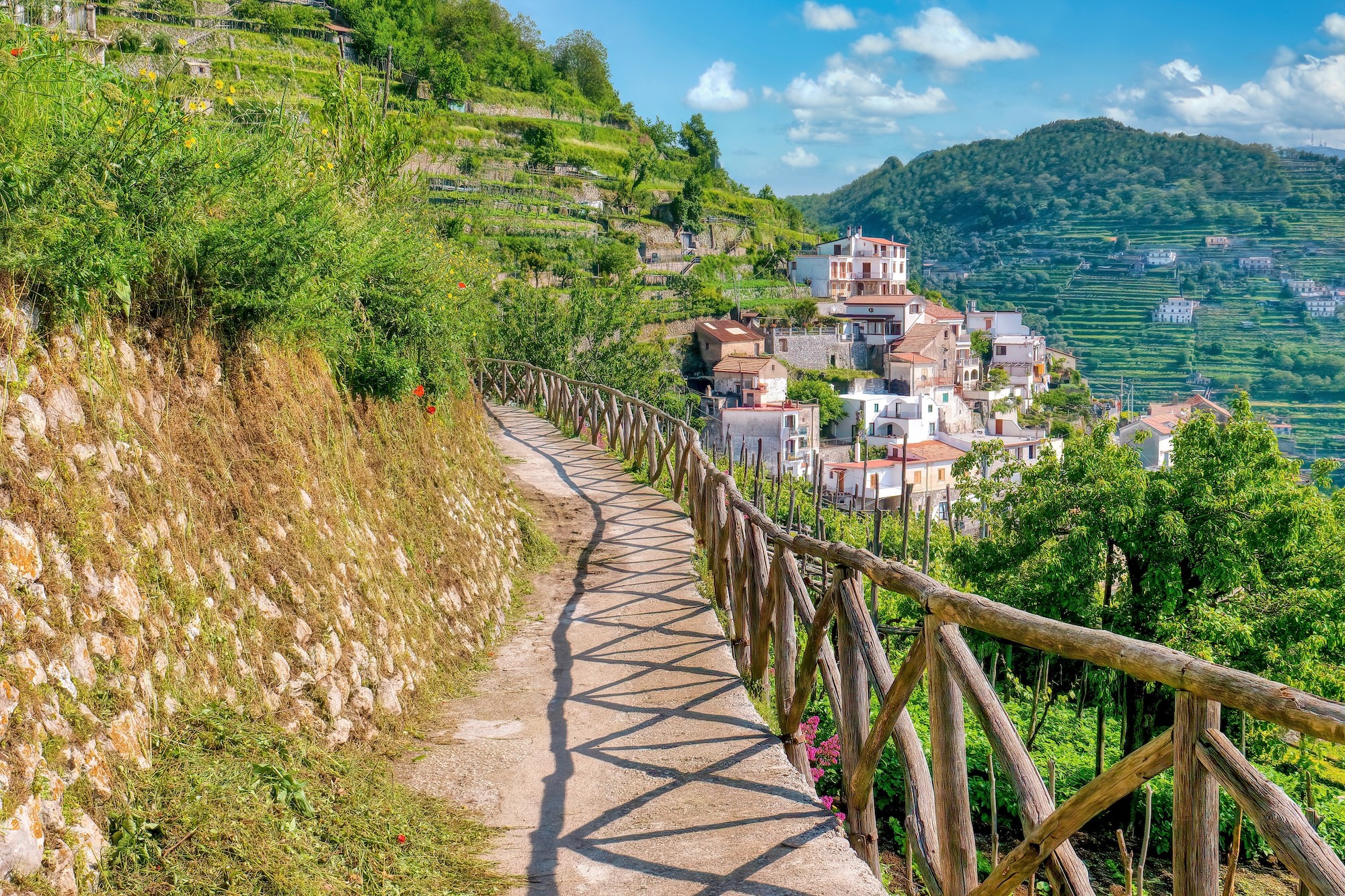
The oldest town on the Amalfi Coast, Scala sits across the valley from Ravello and is a haven of medieval architecture, terraced lemon groves, and forested hillsides. Its peaceful setting and rich history make it a favorite among hikers and history buffs.
Top Attractions:
- Duomo di San Lorenzo – A Romanesque cathedral with ancient crypts and beautiful interiors.
- Valle delle Ferriere Nature Reserve – Lush woodland trails filled with waterfalls, rare plants, and ruins of old ironworks.
- Ruins of the Basilica di Sant’Eustachio – Atmospheric remains of a 12th-century basilica, perched on a scenic hilltop.
Why visit?
Scala is perfect for those looking to escape the crowds, immerse themselves in history, and experience the serene, green heart of the Amalfi Coast.
14. Tramonti
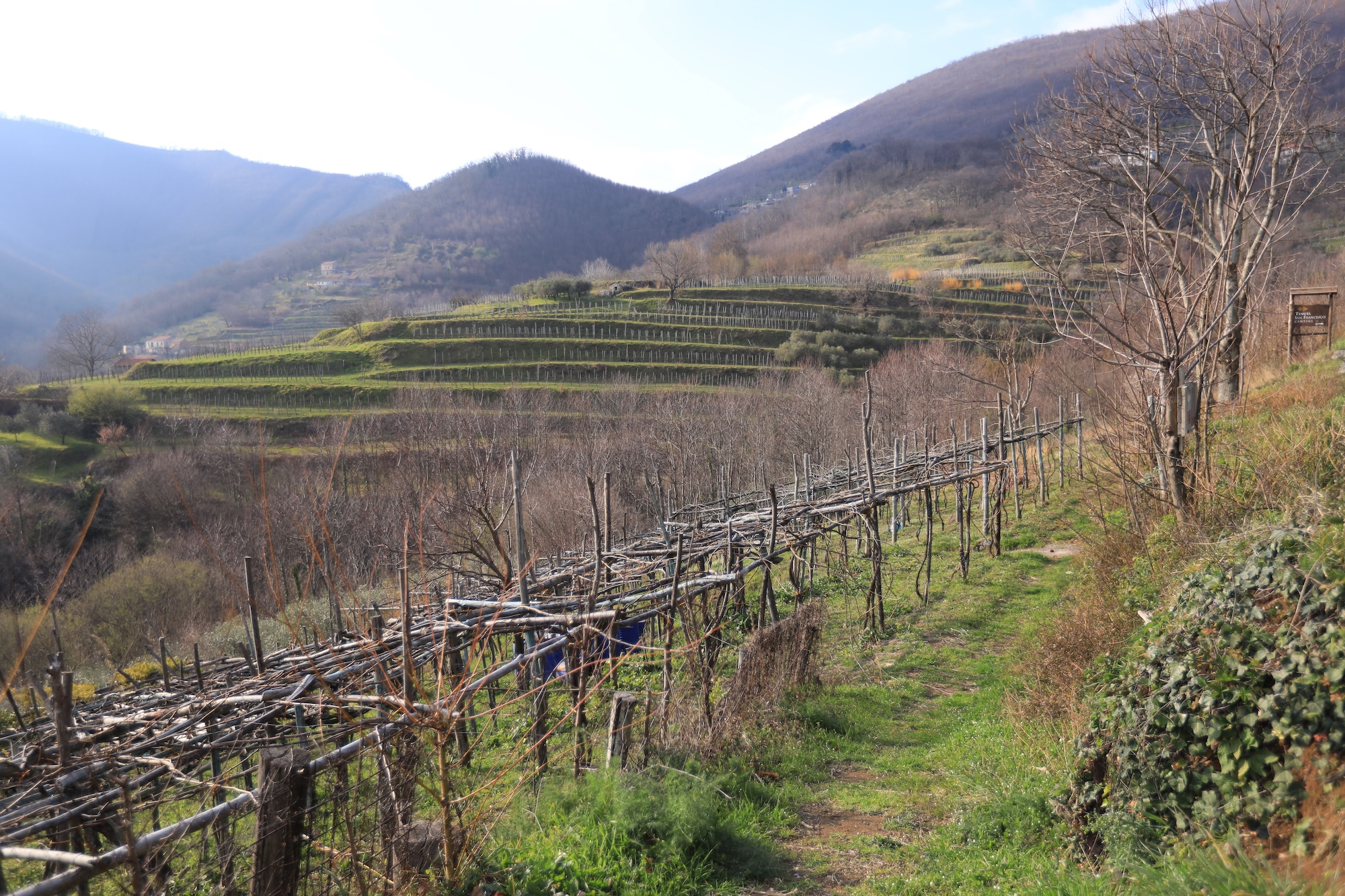
Nestled in the lush hills above the Amalfi Coast, Tramonti is a collection of ancient villages surrounded by vineyards, chestnut forests, and lemon groves. Known as the “Green Heart” of the Amalfi Coast, it offers a peaceful escape from the busy seaside towns.
Top Attractions:
- Castello di Montalto – The ruins of a medieval castle with sweeping views over the valley and coast.
- Church of San Francesco – A historic church with a beautiful cloister and centuries-old frescos.
- Wine Cellars of Tramonti – Explore local wineries and taste the region’s celebrated DOC Costa d’Amalfi wines.
Why visit?
Tramonti is a haven for food and wine lovers, hikers, and those seeking authentic rural life. It’s famous for its pizza tradition (some say the original pizza-makers of Naples came from Tramonti!) and tranquil, green scenery.
Seasonal Recommendations
☀️ Summer (June–August): Summer is the peak season on the Amalfi Coast, with lively beaches, bustling piazzas, and a festive atmosphere in towns like Positano and Amalfi. Temperatures average between 77°F to 88°F (25°C to 31°C), making it perfect for sunbathing on Spiaggia Grande, swimming in turquoise waters, and enjoying seaside dining. Expect crowds at popular spots and higher prices, but the energy, vibrant nightlife, and warm evenings make it the ultimate time for those seeking the coast at its most dynamic.
🌸 Spring (March–May): Spring is one of the best times to visit the Amalfi Coast. With average temperatures ranging from 59°F to 73°F (15°C to 23°C), hillsides burst with wildflowers and lemon trees bloom, filling the air with sweet scents. The towns are less crowded, making it ideal for leisurely exploring places like Ravello’s Villa Cimbrone gardens or hiking the Path of the Gods above Praiano. Spring is perfect for photography, outdoor adventures, and sampling the first tastes of the new season’s cuisine.
🍁 Autumn (September–November): Autumn is a favorite among savvy travelers, offering mild weather, thinner crowds, and golden light over the coastline. Temperatures typically range from 60°F to 77°F (16°C to 25°C). It’s grape harvest season in towns like Tramonti, a great time for food and wine lovers to explore vineyards and local trattorias. The sea is still warm for swimming, and towns like Minori and Maiori are relaxed and inviting. Autumn is ideal for those seeking authentic local life and quieter sightseeing.
❄️ Winter (December–February): Winter is the quietest season on the Amalfi Coast, but it reveals a peaceful, authentic side of the region. Temperatures generally range from 45°F to 59°F (7°C to 15°C), and while some hotels and restaurants may close, towns like Amalfi and Sorrento remain open and festive, especially around the holidays. Winter is perfect for experiencing the coast’s historic sites, enjoying local cuisine without crowds, and seeing the dramatic coastline in a more intimate setting. It’s a tranquil, reflective time best suited for relaxed exploration and cozy stays.
The Amalfi Coast Excursions
Tips for Your Visit
Getting Around
- Use Ferries and Buses: The most scenic and convenient way to travel between Amalfi Coast towns is by ferry or the SITA bus. Both offer stunning views and avoid the region’s narrow, winding roads.
- Consider Private Transfers: For comfort or traveling with luggage, private car transfers or taxis can be arranged, but expect higher costs and possible delays during peak season traffic.
- Walk and Explore: Many towns, like Positano and Amalfi, are best explored on foot. Wear comfortable shoes for cobblestone streets and stairs.
Local Cuisine
- Try Seafood Specialties: The coast is famous for fresh seafood—don’t miss dishes like spaghetti alle vongole (clams) or grilled local fish in seaside restaurants.
- Enjoy Lemon Delights: Taste Amalfi’s world-famous lemons in everything from limoncello liqueur to desserts like delizia al limone and lemon granita.
- Sample Local Pasta: Try handmade pasta dishes unique to the region, like scialatielli ai frutti di mare or ravioli stuffed with local ricotta.
Language
- Basic Italian is Helpful: Italian is the main language. Learning simple phrases (like “grazie” and “per favore”) goes a long way and is appreciated by locals.
- English is Spoken in Tourist Areas: In most hotels, restaurants, and tourist spots, staff speak some English, but it’s polite to greet in Italian first.
Safety
- Watch for Pickpockets: Especially in busy areas, ferries, and buses—keep your valuables secure and be mindful in crowds.
- Be Cautious on Roads and Trails: Coastal roads are narrow and winding. If you’re driving or hiking, take your time and watch for sharp turns and stairs.
- Emergency Numbers: Dial 112 for emergency services (police, medical, fire) anywhere in Italy.
These tips will help you navigate the Amalfi Coast smoothly, savor its delicious cuisine, and stay safe while discovering this Italian paradise!
3 Popular Restaurants
The restaurant scene along the Amalfi Coast is a dream for food lovers, with everything from seaside trattorias serving up fresh catch to Michelin-starred destinations offering elevated takes on local cuisine. Dining here means breathtaking views, world-class seafood, fragrant lemons, and the true flavors of southern Italy. Whether you crave rustic authenticity or elegant fine dining, you’ll find unforgettable culinary experiences in every village along the coast.
1. La Sponda
Location: Via Cristoforo Colombo, 30, 84017 Positano SA, Italy View On Map
Cuisine: Mediterranean, Italian (Fine Dining)
Why It’s Popular: La Sponda at Le Sirenuse Hotel is renowned for its romantic setting—hundreds of candles, views over Positano, and refined Mediterranean cuisine using local ingredients. It has one Michelin star and is celebrated for both its exquisite seafood dishes and dreamy atmosphere. The experience of dining here is quintessential Amalfi Coast luxury.
2. Marina Grande
Location: Viale della Regione, 4, 84011 Amalfi SA, Italy View On Map
Cuisine: Mediterranean Seafood
Why It’s Popular: Situated right on the beachfront, Marina Grande offers diners stunning sea views alongside a menu rich in fresh seafood dishes. The combination of high-quality ingredients, attentive service, and a picturesque setting makes it a favorite among both locals and tourists seeking an authentic Amalfi dining experience.
3. Da Vincenzo
Location: Viale Pasitea, 172/178, 84017 Positano SA, Italy View On Map
Cuisine: Italian, Mediterranean
Why It’s Popular: Family-run since 1958, Da Vincenzo is beloved for its warm hospitality and authentic Amalfi Coast flavors. Tourists and locals alike rave about its fresh seafood, homemade pastas, and seasonal specialties. Its charming setting just above Positano’s center, along with consistently top-notch service, make it a must-visit for a true taste of the coast.
Tips for Dining in The Amalfi Coast
The Amalfi Coast is a culinary paradise where dramatic seaside scenery, sun-ripened lemons, and the freshest seafood come together for an unforgettable dining experience. Whether you’re enjoying a romantic candlelit meal overlooking the cliffs of Positano, savoring lemon-infused desserts in Minori, or sampling rustic pizzas in the mountain villages, the region offers something for every palate. Use these essential tips to make the most of your dining adventures along this spectacular coastline.
Important: The Tap Water is Generally Safe to Drink on the Amalfi Coast
Tap water is generally safe to drink throughout the Amalfi Coast and meets Italian health standards, but many locals and visitors prefer bottled water due to taste and mineral content.
Tip: Most restaurants will offer bottled water by default. If you prefer tap water (“acqua del rubinetto”), you can ask, but don’t be surprised if it’s discouraged or politely declined in favor of bottled. When in doubt, stick to bottled water, which is affordable and widely available.
1. Make Reservations—Especially in High Season
The Amalfi Coast is a world-famous destination, and its most popular restaurants fill up quickly, especially in summer and on weekends.
Tip: Book tables in advance using the restaurant’s website, by phone, or through hotel concierge services. For Michelin-starred or cliffside spots in Positano and Amalfi, reserve at least a few days ahead.
2. Embrace Local Specialties
The region is known for dishes bursting with local flavors—think seafood pasta, lemon desserts, and wood-fired pizzas from mountain towns like Tramonti.
Tip: Try specialties such as scialatielli ai frutti di mare (fresh pasta with seafood), delizia al limone (lemon cake), and anchovy-based dishes in Cetara. Always ask about the day’s catch or seasonal specialties.
3. Take Your Time—Meals Are an Experience
Dining in Italy is not rushed. Meals are savored over several courses and enjoyed with friends or family.
Tip: Relax and enjoy the pace! Expect lunch to last up to two hours and dinner even longer. Savor the scenery, chat with locals, and don’t rush your meal.
4. Don’t Miss the Views
Many restaurants feature breathtaking views of the coastline, especially in towns like Ravello, Positano, and Amalfi.
Tip: For the most scenic spots, request a terrace or window table when booking. Arrive early for sunset—tables with views often book up first.
5. Mind the Cover Charge
Most Italian restaurants add a small “coperto” (cover charge) per person for bread and table service.
Tip: This fee is normal and listed on the menu. Tipping is appreciated but not mandatory; rounding up the bill or leaving small change is customary.
6. Get Around Like a Local
The towns are best explored on foot, but getting between them for dining adventures can require planning.
Tip: Use ferries or the SITA bus to travel between coastal towns—both offer scenic rides and avoid driving on narrow, winding roads. If staying late, confirm return schedules, or ask your restaurant to help arrange a taxi.
7. Try Street Food and Casual Eats
Beyond fine dining, the Amalfi Coast is full of casual spots, bakeries, and beach bars.
Tip: Grab a slice of pizza al taglio (by the slice) or try fried seafood cones (“cuoppo di mare”) at local stands. These make for affordable and tasty lunches on the go.
8. Respect Local Dining Hours
Restaurants often close between lunch and dinner, and evening service starts later than in some countries.
Tip: Lunch is typically served from 12:30–2:30 pm, and dinner from 7:30 pm onward. Arriving too early may mean waiting for the kitchen to open.
Conclusion
Dining along the Amalfi Coast is about much more than just food—it’s an immersion in culture, scenery, and Italian hospitality. Whether you’re feasting on seafood beside the waves or sipping limoncello as the sun sets, a little planning and local know-how will help you make the most of every meal. Buon appetito!









